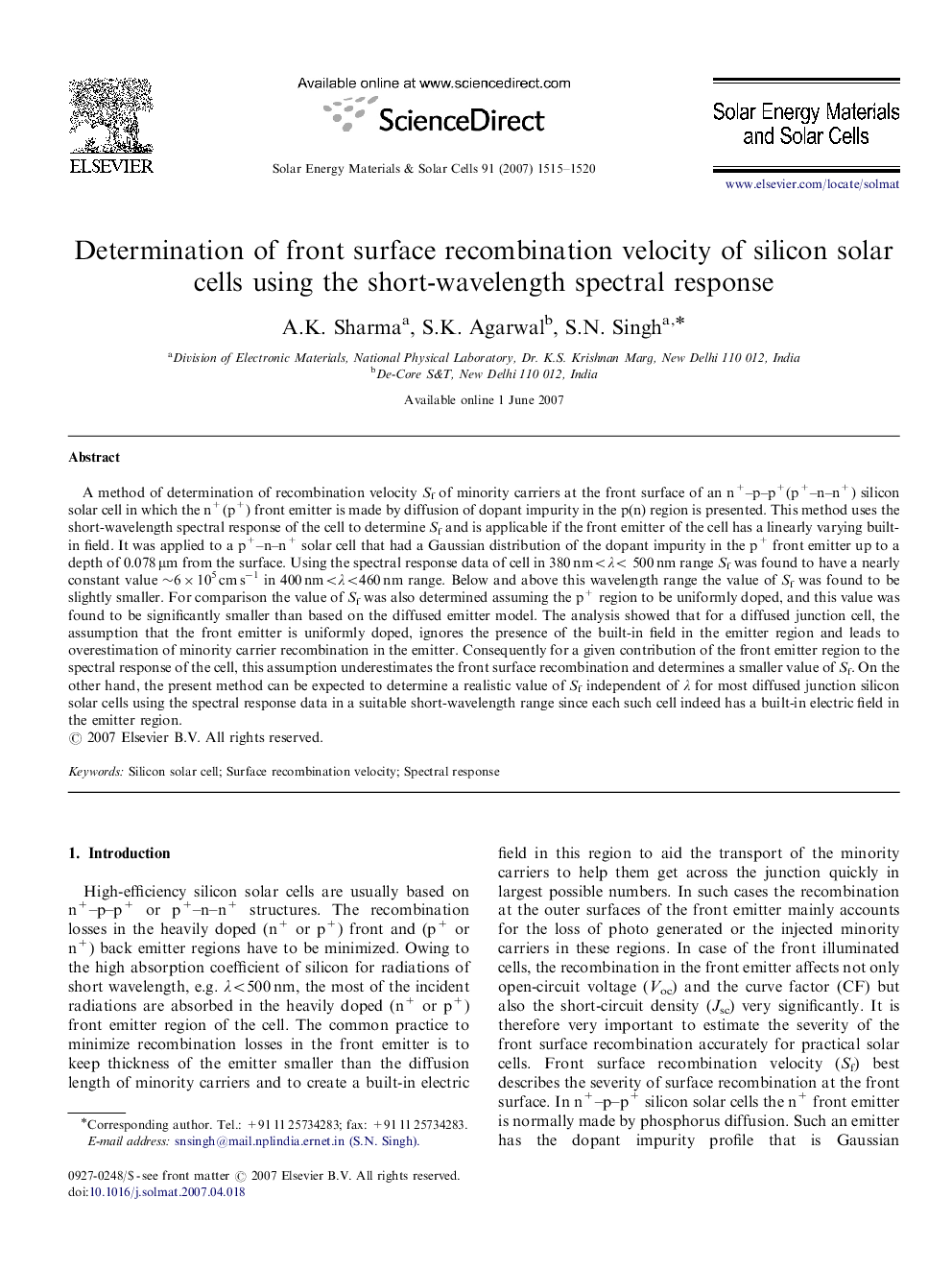| Article ID | Journal | Published Year | Pages | File Type |
|---|---|---|---|---|
| 80986 | Solar Energy Materials and Solar Cells | 2007 | 6 Pages |
A method of determination of recombination velocity Sf of minority carriers at the front surface of an n+–p–p+(p+–n–n+) silicon solar cell in which the n+(p+) front emitter is made by diffusion of dopant impurity in the p(n) region is presented. This method uses the short-wavelength spectral response of the cell to determine Sf and is applicable if the front emitter of the cell has a linearly varying built-in field. It was applied to a p+–n–n+ solar cell that had a Gaussian distribution of the dopant impurity in the p+ front emitter up to a depth of 0.078 μm from the surface. Using the spectral response data of cell in 380 nm<λ< 500 nm range Sf was found to have a nearly constant value ∼6×105 cm s−1 in 400 nm<λ<460 nm range. Below and above this wavelength range the value of Sf was found to be slightly smaller. For comparison the value of Sf was also determined assuming the p+ region to be uniformly doped, and this value was found to be significantly smaller than based on the diffused emitter model. The analysis showed that for a diffused junction cell, the assumption that the front emitter is uniformly doped, ignores the presence of the built-in field in the emitter region and leads to overestimation of minority carrier recombination in the emitter. Consequently for a given contribution of the front emitter region to the spectral response of the cell, this assumption underestimates the front surface recombination and determines a smaller value of Sf. On the other hand, the present method can be expected to determine a realistic value of Sf independent of λ for most diffused junction silicon solar cells using the spectral response data in a suitable short-wavelength range since each such cell indeed has a built-in electric field in the emitter region.
